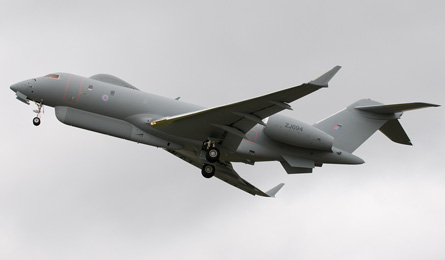The UK Ministry of Defence's Airborne Standoff Radar (ASTOR) system has made its operational debut over Afghanistan, ending a two-year delay in getting the ground surveillance asset into frontline use.
Military sources say the Royal Air Force's 5(AC) Sqn met an objective to have two Raytheon Systems-supplied Sentinel R1 aircraft and two ground stations operational during November, the benchmark required for the system to achieve its in-service date.
A UK counterpart to the US Air Force's Boeing 707-based Northrop Grumman E-8C JSTARS airborne ground surveillance system, ASTOR will deliver imagery from its dual-mode synthetic aperture radar and ground moving target indication sensor in support of ground operations.
The Sentinel R1s - modified Bombardier Global Express business jets - plus related ground-based communications and imagery exploitation equipment are now at undisclosed sites in the Middle East region, the sources say. The MoD formally announced the in-service date milestone on 1 December.
 |
|---|
© APG Photography Gallery on flightglobal.com/airspace |
"Training of squadron personnel and development of the system has progressed exceedingly well over the last 18 months," says Wg Cdr Harry Kemsley, officer commanding 5 Sqn. "The squadron is now in a position to make a positive contribution to current operations in the very near future."
Raytheon Systems, meanwhile, expects to hand over the UK's fifth and last Sentinel R1 airframe before year-end at RAF Waddington, Lincolnshire. The type had originally been scheduled to meet an in-service target of November 2006, but the £860 million ($1.3 billion) programme suffered development delays with its radar, including the loss of one sensor during a ground mishap.
"As part of the ongoing operational development process ASTOR will undertake an overseas deployment prior to achieving full operating capability about two years from now," says the MoD.
Source: Flight International























